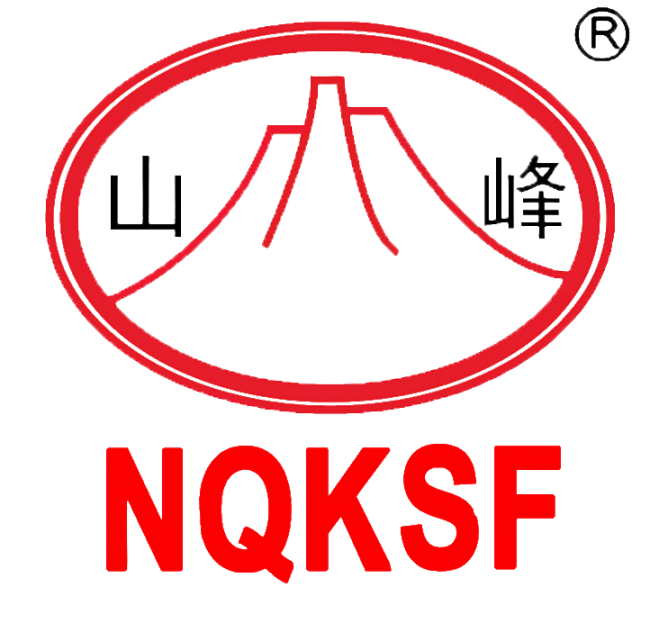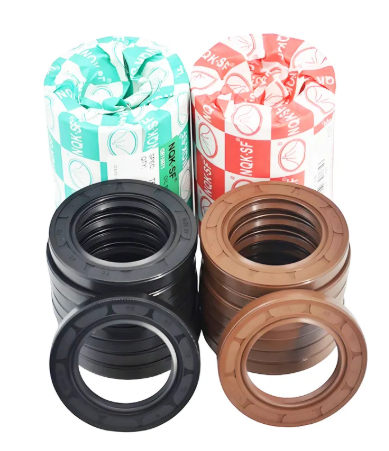Essential Daily Inspection Practices for Oil Seals
Visual Leak Detection Techniques
Regular visual checks are also essential to notice any leaks around the oil seal region. Examining for signs of discoloration, wetness, residue can indicate oil leak and result in equipment failure. These inspections can be further enhanced by added specialized leak detection dyes or UV light procedures- particularly in low light and difficult to reach areas. These are the sorts of preventive actions that can save customers from surprise seal failures which can happen whenever there’s a leak and it’s not discovered and remedied in a timely manner.
Temperature Monitoring Methods
It is important to monitor the oil seals temperatures at an early stage of seal degradation. Temperature sensors or infrared cameras can be used to monitor the operating temperature of seals on-line. Temperature differential recording is important because extremely hot temperatures could accelerate wear, and determining how hot things are getting informs preventative maintenance schedules. Regular monitoring of temperature can also help ensure the long life and efficiency of oil seals by avoiding overheating.
Oil Volume Verification Processes
Frequent oil level checks are a much need when it comes to proper lubrication of the seals and to prevent seal failures as well as friction issues. Dipsticks, Level Sensors Help Keep Tabs on Oil Volumes Such tools permit more visibility of oil volumes, and more contact with the oil to allow for the identification of early warning signs. By controlling the exact volume of oil you can be sure of efficient machine performance, minimising the chance of unwanted machine downtime.
Pressure Assessment Protocols
It is critical to check system pressure at the oil seal location. Unusual pressure readings, for example, may indicate failures of a seal or system blockages. The practice of taking measurements of pressure using pressure gauges and recording the same facilitates trend analysis and early detection of potential problems, which if identified and resolved in time will forestall major equipment failures. Frequent pressure checks are essential for system longevity and seal integrity.
Contamination Identification Strategies
The integrity of the seal needs to be maintained, and to that end, monitoring for contamination in the form of dust, dirt and the like is necessary. It is therefore important to have the external surfaces routinely monitored for contamination and make use of filtration systems and environment seals to reduce the chance of contamination. These approaches help seals work more effectively and prolong the life of seals by shielding them from negative external effects.
Lubrication Management and Contamination Control
Selecting the Right Lubricant Type
Oil Seal Lubricants Selecting the proper oil for the life and fit of oil seals. It is important to determine the exact type of lubricant recommended for the oil seal material in relation to temperature of operation, load conditions and type of seal material. Referencing the manufacturers’ specifications will guarantee that the selected lubricant is ideally suited for the needs of the oil seal, take a look at if it may be applied even if the oil seal is subject to heavy work loads or if it can be applied to a light weight condition regarding the use of the pump, it can probably be done by applying another supplier of lube oil to the application.
Monitoring Grease Consistency and Color
The quality of the grease must be regularly checked for any contamination or deterioration, by testing the consistency and color of the grease. Alterations of the lube appearance gives hint on possible undesirable elements that can jeopardize the seal integrity. Because I have visual criteria to know what is good in a lubricant, I see at a glance when my maintenance is needed to give full performance and life of my seal.
Implementing Contamination Barriers
The use of R3T-O, protective covers & seals, reduce the inflow of contaminants into regulating systems considerably. These barriers are also supplemented with the execution of a maintenance schedule that periodically checks and renews these barriers. This strategy ensures that the lubrication systems are protected from the elements, thus ensuring the seals' performance and integrity.
BS&W (Bottom Sediment & Water) Analysis
Regular BS&W testing ensures that the lubricant is free of bottom sediments and water, which can seriously impair oil seal operation. I've been able to keep my oil quality to the maximum level by testing on intervals and effectively increasing the life of oil seals. This is a preventative measure that helps the oil seals stay healthier for longer, and reduces the chance of them wearing through contaminants.
Proactive Leak Prevention and Alignment Checks
Shaft Seal Alignment Verification
It is extremely important to have proper shaft alignment in order to avoid oil seal wear. Designed to be used with Precision Laser cut alignment tools, it will maximize the precision and minimize the risk of early seal failure. Creating preventive maintenance schedules that include alignment checks is a must. It is the same story for misaligned oil seals - the oil seal doesn't seat properly and the seal has a tendency to "wear it" in and cause a leak. Routine inspections will not only maintain operational efficiency, but will also increase the life span of the seals by detecting and correcting misalignment problems early.
Identifying Premature Seal Wear Patterns
First of all, wear analysis of seal surface is important as part of oil seal performance. Surface testing to identify groove or crack, Mindinski prevention measurements can be put in place in time. It is useful to document these findings in order to establish a useful baseline for the future maintenance. In addition, the use of condition monitoring methods enables the direct linking of usage patterns to wear rates of the seals, thereby providing information on the possible origins of the premature wear. This forward thinking assists in maximizing seal life and reducing unscheduled downtime.
Addressing Misalignment Issues
Rectifying action must be taken immediately when alignment difficulties are observed. There would be no damage to seals and better alignment can be gained by repositioning machinery for proper alignment. It is important that maintenance personnel are adequately trained to promptly detect and remedy misalignment problems to prevent seal failure and excessive machinery wear. By promoting a preventive maintenance mentality, organizations can more effectively protect their systems from expensive downtime due to misalignment.
Seal Surface Polishing Techniques
Applying polishing techniques to regain the texture of the seal surfaces is also a good method to keep seals effective and limit wear. When used appropriately, polishing rejuvenates the seal's capacity and capability without harming it. The investigation of optimal practices for the given seal material results in a polishing that is efficient and safe. Using such seal material knowledge, the polishing process can be employed to improve the longevity and effectiveness of the seal, leading to better system performance.
Maintenance Best Practices for Longevity
Proper Installation Procedures
The importance of correct installation methods can't be overstated when it comes to oil seals. When mounting oil seals, refer to the manufacturer's instructions, making sure to stick to them to ensure proper positioninig and proper installation. This" "Keeps Hygenist Dry" and "Prevents Premature Wear and Whalebone Problems". Also, installation by skilled technicians can further improve the seal performance. Their craft ensures everything lines up perfectly to avoid the issue of install gone wrong.Protection and Performance.
Routine Maintenance Scheduling
A strict plan for keeping up with routine maintenance is vital for oil seals to have a long life. It must also one of the things that be a part of regular maintenance including inspection, lubrication and replacement of oil seals in need condition. Repeating preventive maintenance PM checks can even be logged in a maintenance management system to schedule and monitor, so no inspection ever falls through the cracks and gives up on your equipment. If worn through, the metal collar will scratch the camera's lens and the actuator (the important part of the lens). This simple tool prevents this and allows you to check your gear. This method helps avoid the very expensive damage.
Operator Training Requirements
Operators trained in maintenance best practices are a must for daily operation and long lasting seal. Operators will need to know how to check seals and pick up on indicators for maintenance requirements. And structured training that includes best practices for operational safety and reporting procedures can help a lot. If properly instructed, operators report problems then and there, so corrective action can be taken immediately.
Documentation and Condition Tracking
2.5.1 Record keeping Detailed records of inspections, repairs and replacements of oil seals are essential to monitor their performance over time. Digitalization tools may facilitate this process of documenting such conditions and therefore make it more efficient and attainable. Detailed records assist in the analysis of wear patterns and help schedule maintenance when it is needed, which extend the service life of the seals.
Incorporating these maintenance best practices ensures that oil seals perform optimally, significantly reducing the risk of unexpected failures and operational downtimes. Consistent attention to installation procedures, routine inspections, operator training, and documentation can considerably extend the lifespan of oil seals, providing peace of mind in their reliability.
FAQ
What are the signs of oil seal leaks?
Signs of oil seal leaks include discoloration, wetness, and residue around the seal area. Using leak detection dyes or UV light can be beneficial in identifying leaks.
How can temperature monitoring help with seal maintenance?
Temperature monitoring can detect early signs of seal degradation, helping in devising preventative maintenance strategies to prevent overheating and enhance seal efficiency.
Why is it important to verify oil volume regularly?
Regular oil volume checks ensure seals are properly lubricated, preventing seal failure and ensuring optimal equipment operation.
What role does pressure assessment play in seal maintenance?
Pressure assessment helps detect abnormal pressure readings that could indicate seal failure or system blockages, thus ensuring seal integrity and system reliability.
How can contamination affect oil seals?
Contamination can compromise seal integrity by introducing external harmful elements such as dust, dirt, and moisture, leading to seal failure.

